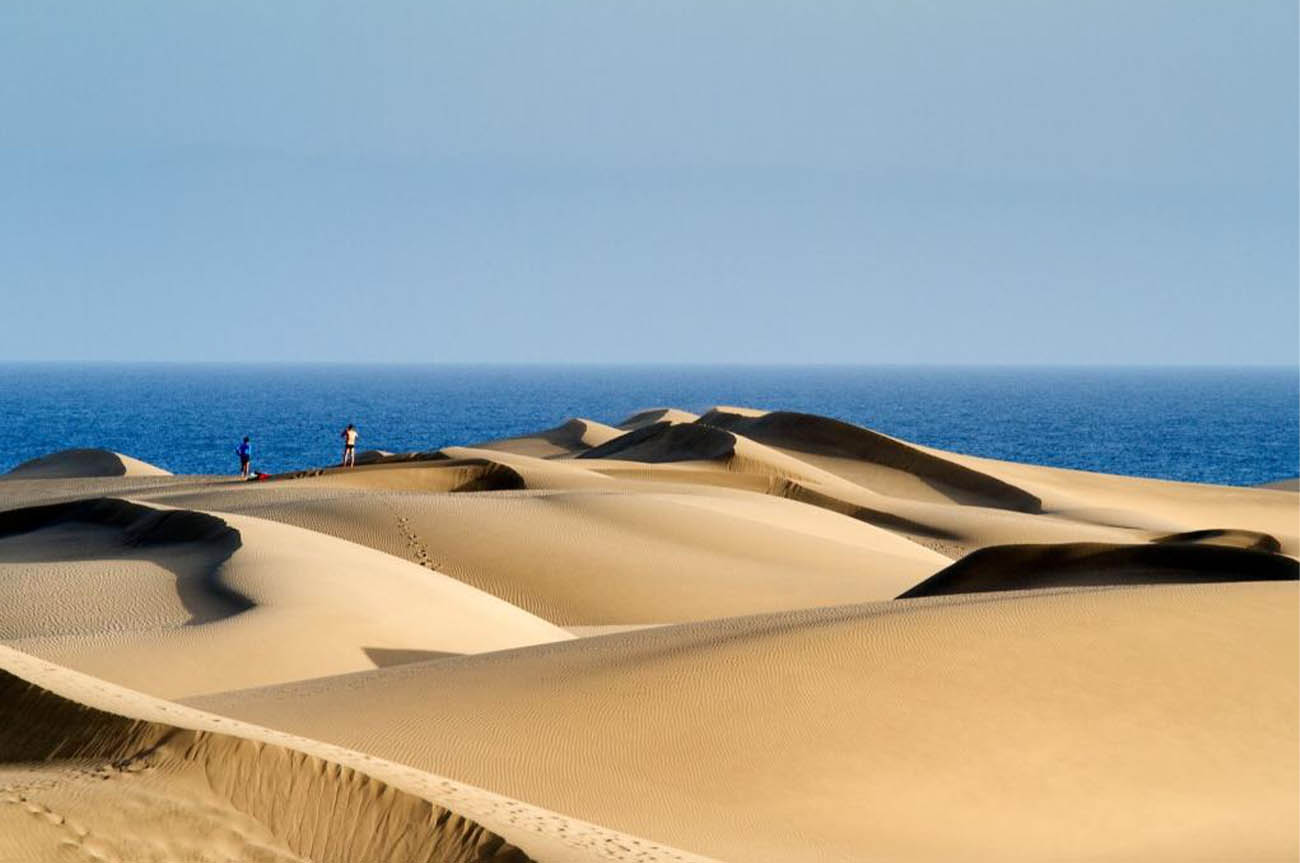The Maspalomas dunes are situated on the south of Gran Canaria Island. It’s a finalist of the 12 Treasures of Spain in 2007.
This space is a Nature Reserve where there is a great and wonderful ecosystem. Along 400 hectares we will be able to discover migrating bird species as the kingfisher or the curlew.
Discover on this blog a hidden part of Gran Canaria island and take note of the curious places you will see. Because we know some facts about this place you don't know about it in another web.
A Natural Reserve
Maspalomas dunes were named a Natural Reserve in 1897; it could protect an important wildlife surround plants and golden dunes. All the tour companies include this destination inside the Gran Canarias’s main excursions, and Maspalomas dunes are an exclusive nature for people with energies to know it.

This bigger place includes the beach, the oasis, and the endless desert. And more important yet, three ecosystems: El Palmeral, Maspalomas Pond, and the Dunes. Maspalomas dunes are an attractive area which is visited by thousands of tourist from around the world.
Lizards and insects
In fact, Gran Canaria has a number of species, only in this part of the world. One of them is the Giant Lizard of Gran Canaria, which has an important number of them. The main characteristic of it is the length (80 cm) and a big head and a stocky body. They move closer to the lighthouse. Full of rich flora and fauna what is just designated for attentive people.
The desert and the oasis in the Maspalomas dunes
There is an interested fake “legend” about the origin of the sand; it’s not true this one is from the Sahara desert. Don’t true everything you learn on the Internet. Maspalomas sand dunes can reach almost 10 meters in height, which moves continually. Travel to Maspalomas in Gran Canaria may give you this spectacular show.
Alternatively, the oasis is basically a beach, the point of interest for tourists who are looking for sun and a cocktail. Even, there are seven zones depends on how you want to enjoy the beach: nudist area, family-friendly area, etc. The best part is to enjoy respectable the space for everybody.

Bordering the beach, Maspalomas offers a variety of restaurants, where you will taste typical dishes and drinks. The activity around the2 kilometers of beach, including Playa del Inglés, has an assortment of watersport and you will see people practicing jet-skiing and parasailing.
For instance, the nude sunbathing is legally permitted within of Maspalomas strict area and it’s separated from the rest of zones
Activities around Maspalomas dunes
For everybody, Maspalomas dunes offer the opportunity to enjoy the holidays. Maybe walking, playing golf or simply, having a relaxing sunbath. Take the swimwear and the floats what you brought and feel the water and the excitement that will give you.
Practice Golf between the Maspalomas dunes
You just imagine yourself playing golf surrounded by dunes, with the family and friends. The Golf course of Maspalomas offers a unique experience, international events and similar. The view presents the largest volcanic landscape.
Close to the golf course, it’s Maspalomas Resort, with 4 stars, where you will have a soft drink or a beer, or on the other hand, you will swim in the amazing swimming pool. Book a room or a bungalow.

Inside the Maspalomas dunes, there is a pint of interest created in 2015 named “Mirador de las Dunas” from where you will see the panoramic landscape.
Ride a camel as a Bedouin
Further, as the movie “The Mummy” of 1999, the heroes participated in an exciting camel race happily. You will get something like that; however, it’s less fast. For 40 minutes and an enthusiastic tour guide, you are riding a camel.
It depends on the time you take the tour, the view changes a little bit. Soon, in the morning, you could see the sunrise, and in the afternoon, you will see the sunset. So, we recommend it, and we have on our “Things to do in Gran Canaria” list.
The Origin of the Maspalomas dunes
The sand is from coral reefs crushed into small grains of limestone, the action was done by glaciers for a long time ago. The sand mounds, nowadays, are moving almost 2 to 5 meters from East to West. A golden treasure moving all the time.
In the beginning, the sea around the beach and dunes, for a long time, provided water all the time, and it formed fluvial terraces with sediments and deltas. The result was the discovery of fossilized animals and plants. You might watch the old dunes actually.
Accordingly, the movement of the dunes is due by the wind. Due to the situation of Maspalomas dunes to be close to the coast and the erosion produced. Since the moment the human being has started to build hotels and other buildings stopped this movement.
The lighthouse near to Maspalomas dunes
In 1860, the lighthouse was built and it was finished in 1890 by Juan León y Castillo. This metonym and expensive design were called “the gateway to the desert”. The location is on the south point of the island.
This building what to see close to the beach and dunes is 58 meters tall and made of stone and other materials. Nowadays, the lighthouse is an information point and a craft shop and an ethnographic museum.

On the top, there is around the balcony and its light covers Punta de Arinaga to Punta Castillete. If you are lucky, maybe you have the chance to enjoy any events that celebrate during the year. It's considered on the top 5 of the Gran Canaria Attractions.
Maspalomas dunes are some of the main points of interest you should take considerably. We look after the tourists who come here to enjoy the weather and the food. Check our website out and contact us to discover the Maspalomas area.

